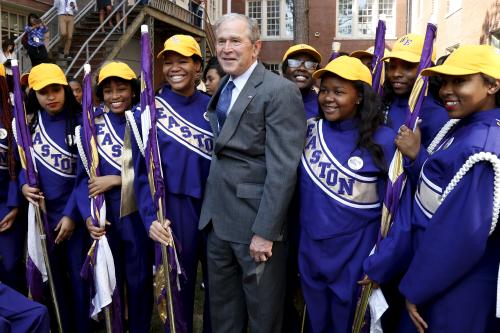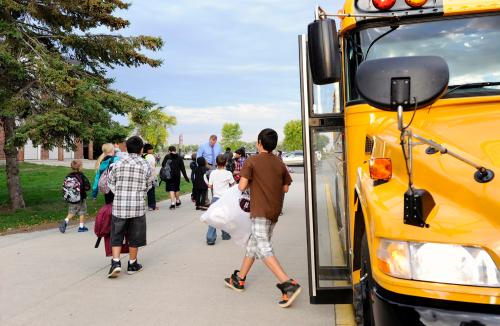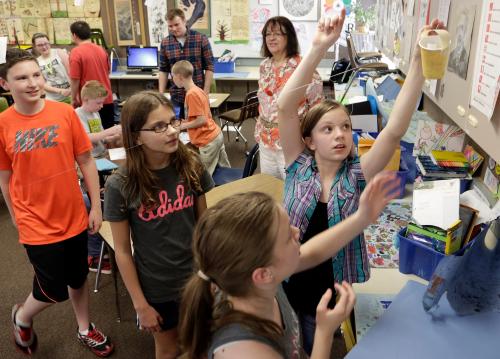School choice, as a type of market reform, makes schools more directly accountable to parents by tying funding to enrollment. Schools need to attract families to remain open, so their survival depends on being responsive to families’ desires.
In holding schools more directly accountable to parents, school choice reforms reduce the influence of the democratic structures and processes that govern traditional public schools. For example, being more responsive to parents generally means being less responsive to school boards. This can have important implications if parents’ desires for their own children’s schools differ from the broader public’s desires for its education system. For instance, schools may look different under school choice reforms if—as is often argued—parents are preoccupied with getting their own children ahead, wanting schools to prepare their children for college and career success at the expense of serving more collective interests for social, political, civic, and economic health.
Questions about how parents’ and the public’s desires for schools differ are among the richest questions surrounding school choice reforms. They are also among the least explored empirically. We recently released a study looking at what parents and the public want from schools. Instead of finding the parents-public distinction we expected, we found a Democrat-Republican contrast we had not considered.
The study
With a sample of online participants constructed to be roughly nationally representative, we ran a set of survey experiments. In essence, we wanted to compare what parents want from their children’s schools to what the broader public wants from U.S. public schools.
In the first study, which we emphasize in this post, we asked parents of school-age children which of three educational goals was most important for their child’s school to pursue successfully. We asked a broader group of adults the same question about either schools in their community or schools around the U.S. This provides a direct comparison of what parents and the broader public want. (Further, by asking some parents about their children’s schools and other parents about schools in their community or country, we assessed whether parents have different desires for their own children and for children more generally.)
The three goals from which participants chose correspond roughly to the historical goals for U.S. education that David Labaree identified in his seminal article, “Public Goods, Private Goods: The American Struggle over Educational Goals.” The first is what we call students’ “private success,” which was described to participants as, “Prepare students for the careers that are best for them personally … even if other careers would benefit the economy more.” The second is “shared economic health,” described as, “Prepare students for the careers that are best for the economy, even if other careers would be better for the students themselves.” The third is “democratic character,” described as, “Prepare students to be engaged, ethical members of their communities who treat others with kindness and respect.”
A follow-up survey moved from abstract to tangible questions, asking respondents about their desires for the structure and content of the school day (e.g., how much time to allocate to each subject), what and how schools should teach, and how to evaluate school performance.
What we found
We expected to find that parents tend to emphasize private goals while the broader public emphasizes societal goals. What we actually found were similar responses across groups, with hardly any significant differences.
Consider how these groups responded to the question about which goal schools should prioritize (n=1,264):
Across the parent and public groups, respondents’ preferences for school goals were similar. We also saw similarities between what parents want from their own children’s schools and what they want from schools more generally, and between the tangible school behaviors desired by parents and the public.
Given these similarities, we wondered who—if anyone—is particularly drawn to “private success.” Did any subgroup of respondents want schools to prioritize students’ private interests over more collective, societal interests?
We ran a logistic regression model to examine which, if any, respondent background characteristics were associated with choosing “private success” as the most important goal. We included all of the usual respondent characteristics in the model: gender, race, ethnicity, educational attainment, age, political affiliation, and parent status. Only one was a significant predictor: Republican respondents were much more likely than Democratic respondents to want schools to prioritize “private success.”
Implications for education policy
So what do these results mean for debates in education policy?
First, we should scrutinize the idea that market pressures from school choice reforms will lead schools to emphasize students’ private interests. Maybe parents want schools to nurture their children as engaged, ethical citizens more than we realize. Maybe the public has adopted a consumer-oriented notion of public education, even at the expense of directly serving the country’s social, political, civic, and economic needs. Maybe it’s a combination of the two. Or maybe parents just want their kids’ schools to do what other schools do—only better.
Second, members of different political parties seem to want American schools to prioritize different educational goals. Republicans, more than Democrats, believe that schools should serve their students’ private interests before they serve broader societal interests. Of course, these pursuits are not always mutually exclusive, nor are they particularly defined or explicit. However, understanding the lens through which Democrats and Republicans see schools can help us understand why the parties’ policy goals diverge as they do—and where they might converge.







Commentary
Comparing what parents and the public—and Democrats and Republicans—want from schools
February 20, 2018